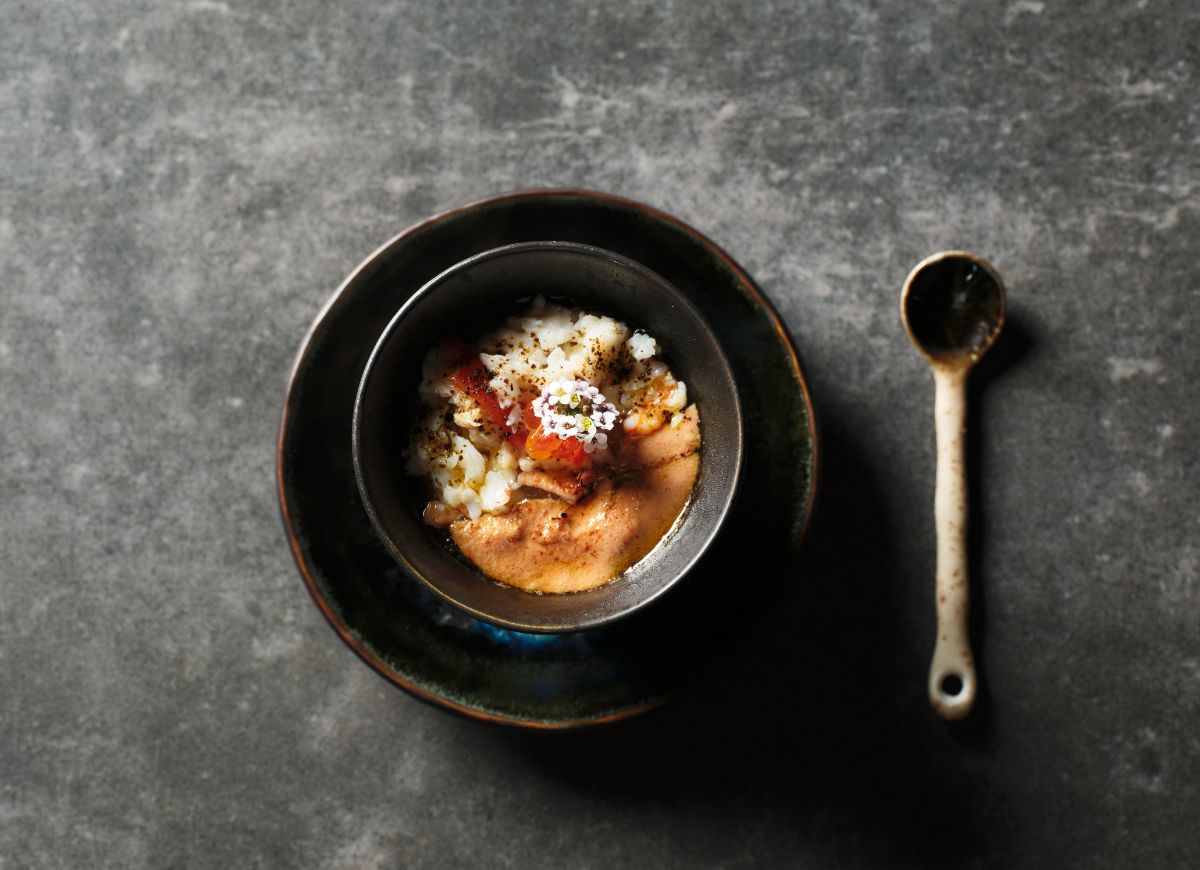Victoria Food & Wine
Melbourne’s Akaiito serves succulent omakase – but not as you know it

Japan’s culture is at once fascinating and yet mysterious, deeply traditional but at times boldly contemporary. At Akaiito, both aspects are showcased and shared.

Japan’s culture is at once fascinating and yet mysterious, deeply traditional but at times boldly contemporary. At Akaiito, both aspects are showcased and shared
The Japanese can be remarkably discreet, and indeed that is how it seems when we arrive at the dark facade of Reid House in the surprisingly leafy western end of Flinders Lane, in Melbourne’s CBD. There is a subtle sign and a tall, ebonised door without handles, but no hint as to how one might enter. Ripples of red and pinpoints of light within the building suggest we have ‘reached our destination’, so we tentatively push the door. It inches open into a dark space. A convivial buzz emanates from below, but we are ushered upstairs to a tranquil room where cocktails are being served.
Akaiito is a softly lit foil for black lacquered furniture, black marble, grey fabrics and light-reflecting crystal glassware, with a red sculptural light fitting – the ‘Red Thread of Fate’, connecting us to our destiny – looping across the ceiling.
I leave it up to you
The formal dining room, with an open kitchen at its heart, has been given over to an ‘Omakase at Your Table’. Omakase in Japanese literally means ‘I leave it up to you’ and implies the diner’s confidence in the expertise and artistry of the chef to offer exquisitely fresh seafood, meticulously presented. Traditionally it refers to sushi, with guests seated at the bar to watch the chefs deftly work their magic, but increasingly there are variations on the theme.
At Akaiito, the courses are more like a dégustation, or tasting, an interpretation of contemporary Japanese cuisine weaving together classic techniques with inventive flavours. Each course is presented tableside and intricately explained by the chef.
The five-course Aka and the signature seven-course Kojin dégustations vary according to season, curated to ensure balance and left to the chef’s discretion. Seafood lovers are especially well served but on the evening we dined, the chef had also prepared a number of exceptional vegetarian courses.
Intense flavours, visual treasures
Each morsel is a visual delight, and a surprise – even when the chef has explained the contents. Our appetisers include a diminutive (one delicate bite) pea tartlet, its paper-thin waffle shell encasing seasonal baby peas, with parmesan, lime zest and a tiny flurry of edible flowers. When we bite into an intricate pink waffle, which looks for all the world like an exotic lotus pod, the subtle beetroot-flavoured case releases featherweight whipped salmon roe.
An intensely flavoured disc of salted and baked beetroot is presented with a scattering of beetroot and nasturtium leaves, a swirl of whipped goat’s curd and peas, on an intriguing textured pottery plate, sourced from a Japanese designer.
Finely textured West Australian marron and blue swimmer crab, served with a zucchini flower and leek velouté, is followed by a baton of seven-day dry-aged duck, its crisply honey-glazed skin glistening beside a petite salad.
A soft, golden brioche loaf, miso-glazed and scattered with caraway seeds, served with a quenelle of seaweed butter, is deliciously moreish.
Wagyu comes with an intense smoked kombu jus, plus daubs of black garlic and wasabi on a lovely, speckled pottery plate.
Desert is a symphony of pink and cream – ribbons of poached Nashi pear, fermented strawberry, guava sorbet, and raspberry meringue on a rippled and glossy white dish.
Finally, petit fours, aligned with precision: chocolate biscotti with crème patisserie, white chocolate with a lustrous cherry glaze, and yuzu jellies – tiny, sugar-dusted lozenges, to finish the meal with an intense citrusy zing.
Food as art
An omakase is definitely food as art, with presentation intrinsic to the experience. Tableware varies from clear, cut-glass plates to gleaming porcelain and textured pottery. “The chef sources new and unusual tableware every year, from Japanese designers, but also from Europe,” our waiter explains.
Chef Winston Zhang and his team of robatayaki and sushi chefs prepare food in the open kitchen with serene focus, precision and passion. “We take pride in our relationships with local suppliers and farms and access to premium local ingredients. And we showcase the diversity of the produce,” he says.
Each course is matched with a wine and our sommelier offers options and explains in detail the source and style of the wines. For example, we enjoy a crisply sparkling prosecco from the Veneto for an aperitif, a fine French chenin blanc matched to a subtle avocado mousse, and a lightly oaked Beaujolais paired with a deeply flavoured chawamushi with spanner crab and foie gras.
Akaiito’s Omakase at your Table is an immersive experience. The food is inventive and beautifully presented, and the service exemplary. Friendly but not intrusive, informed and informative.
Omakase at Your Table is available at Akaiito now. akaiitorestaurant.com.au
Latest Articles
Don't miss the latest from Luxury Travel
